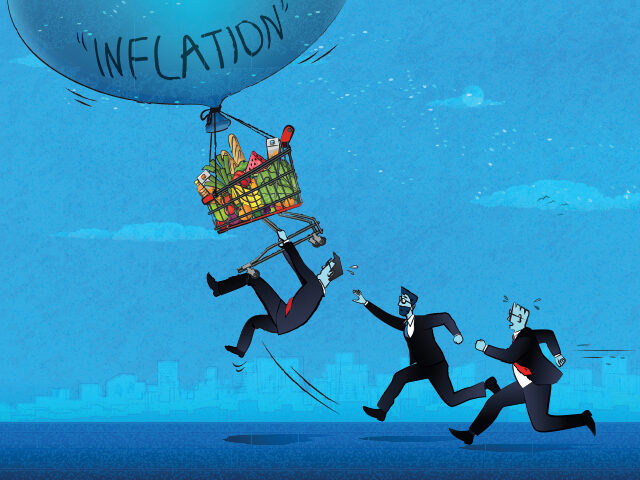Headline Inflation Slows…
Inflation fell to its slowest pace since early 2021 in June, the Department of Labor said on Wednesday.
The U.S. consumer price index rose by three percent compared with a year ago, the government said. Compared with a month earlier, the index was up by 0.2 percent.
Both the yearly and monthly figures were lower than expected. Wall Street analysts had forecast a 0.3 percent increase for the month and a 3.1 percent increase year-over-year.
This sets the stage for the Federal Reserve to raise interest rates by 25-basis points at the next meeting of the Federal Open Market Committee at the end of July.
The Biden administration will no doubt declare the latest headline numbers as a victory over inflation. While the decrease in the pace of price increases is a welcome development to many Americans, it is unlikely to be very reassuring to0 many household budgets. Compared with pre-Biden dollars, Americans now have experienced price increases of around 17 percent.
…But Deeper Inflation Persists
More troubling than either core or headline inflation, however, is the resistance of underlying inflation. Median CPI was unchanged at 0.4 percent for the month, the third consecutive month at that rate, according to the Federal Reserve Bank of Cleveland. The Cleveland Fed’s calculation of 16 percent trimmed-mean CPI came in at 0.2 percent, exactly where it was last month.
This suggests that inflation is unlikely to come down by much more in the months to come. It will likely take a few months for the Fed to realize that inflation is stuck around three percent, but when this realization does occur, the market may be shocked by a second round of interest rate hikes.
A Beigey Shade of Summer
The U.S. economy picked up in June, defying predictions of a summer slump, according to the sort of people who chat with Federal Reserve officials. But businesses are worried about what the future holds.
“Overall economic activity increased slightly since late May,” the Fed said in its Beige Book. “Economic expectations for the coming months generally continued to call for slow growth.”
The survey says that employment increased “modestly” in recent months, supporting the Department of Labor’s view that businesses added 209,000 employees to payrolls in June. Most Fed districts reported at least some job growth.
Inflation persists, of course, but it is now more manageable. Most districts reported a slower rate of price increases, and expectations for prices were stable or lower in most areas.
Underwear Indicator
We pass along this without comment from MarketWatch:
Men’s underwear purchases as a recession indicator? You can thank former Federal Reserve Chair Alan Greenspan for flagging that one, after he told an NPR correspondent that he monitored sales of men’s undergarments to help forecast economic downturns. The theory goes that when the economy slows, men buy less underwear because, well, why spend on what isn’t seen?
Men’s underwear sales dipped during the financial crisis, and dropped significantly in 2020 during the pandemic-induced recession, according to Euromonitor data provided by David Swartz, a senior equity analyst with Morningstar Research Services.
Dollar sales of men’s underwear remained relatively stable from 2021 to 2022, according to Circana, but the number of pairs sold declined 12% year over year. Households earning less than $50,000 spent significantly less on men’s underwear last year relative to 2021, Circana reports.
Okay. We cannot resist. This is the best underlying indicator of inflation we have come across.

COMMENTS
Please let us know if you're having issues with commenting.